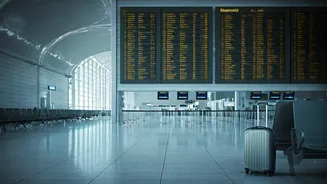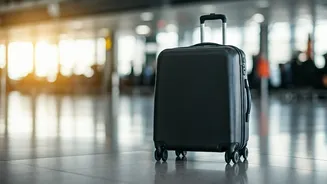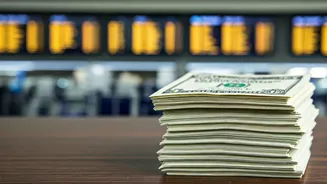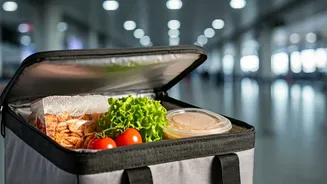Booking Your Flight
The initial step of your travel adventure begins with securing your flight. The booking process can often seem daunting, but it doesn't need to be. Begin
by exploring various online travel agencies (OTAs) or directly visiting the websites of your preferred airlines to compare prices and flight options. Consider factors such as flight times, layover durations, and baggage allowances. Before finalizing your booking, carefully review the details. Double-check the dates, times, and destinations to ensure everything aligns perfectly with your plans. Once you’re satisfied, proceed with providing the necessary passenger information, including your full name, date of birth, and contact details. Choose your preferred payment method and complete the transaction. After payment, you'll receive a confirmation email with your booking reference, e-ticket, and other important information. Keep this information safe as it's essential for check-in and other airport procedures. It’s also wise to check the airline's cancellation and refund policies before confirming the booking, as these vary.
Check-in Process Unveiled
Check-in is your official entry point into the airport's pre-flight preparations. This is where you declare your intent to fly and receive your boarding pass. There are several ways to complete the check-in process, offering convenience to travelers. Online check-in, available typically 24-48 hours before your flight, allows you to check in from the comfort of your home or office. Simply visit the airline's website or use their mobile app, enter your booking reference or name, and follow the prompts. You can select your seat, check in your baggage (if applicable), and print your boarding pass or receive it digitally. Airport kiosks offer another convenient option. These self-service machines allow you to check in quickly by entering your booking details or scanning your passport. Kiosks provide an efficient way to check in, especially if you have minimal baggage. Lastly, the traditional method involves checking in at the airline's counter. Staff at the counter will assist with the check-in process, verify your identification, check your baggage, and issue your boarding pass. The counter is especially helpful for passengers needing extra assistance or those with complex travel needs. Regardless of your chosen check-in method, ensure you have your valid identification, such as your passport or government-issued ID, ready for verification.
Navigating Security Check
After completing the check-in process, your next crucial step is security. Security checkpoints are in place to ensure passenger safety. Before entering the security area, prepare yourself by removing any metallic items from your pockets, such as keys, phones, and wallets, and placing them in the provided trays. Remove your laptop and any large electronic devices from your carry-on luggage and place them in a separate tray for screening. You may also be asked to remove your shoes, especially if they have thick soles or contain metal. Place all your belongings, including your carry-on baggage, through the X-ray machine. Following this, you will proceed through the body scanner or metal detector. If the detector beeps, you may be subject to a secondary screening, which may involve a pat-down by security personnel. It’s critical to listen to and follow the instructions provided by security officers throughout this process. This helps facilitate a smooth and efficient security check, ensuring everyone's safety. Familiarize yourself with restrictions on liquids, gels, and aerosols, as these are subject to strict limitations.
Reaching The Gate
Once through security, it’s time to head to your departure gate. You can find your gate number on your boarding pass. Airport terminals are often large and can be confusing. Take advantage of the airport’s information screens, which display flight details and gate assignments, often with real-time updates. The terminals also offer convenient amenities, such as shops, restaurants, and lounges, making the waiting period more comfortable. Keep an eye on the screens for any gate changes or delays. If you are unfamiliar with the airport, be sure to ask airport staff for directions to ensure you arrive at your gate on time. Many airports also offer free Wi-Fi, allowing you to stay connected and productive while waiting. Ensure you arrive at your gate well before the scheduled boarding time, as indicated on your boarding pass. This will allow enough time for any final checks and boarding procedures. Keeping track of time and gate information will ensure a smooth transition to your flight.
Boarding The Aircraft
As boarding time approaches, listen for announcements or check the screens for updates. Proceed to your gate and have your boarding pass and identification ready for inspection. Boarding is usually done in groups, which are often indicated on your boarding pass. Follow the instructions of the airline staff and wait for your group number to be called. When it’s your turn, present your boarding pass to the gate agent for scanning, and follow their instructions. As you enter the aircraft, locate your seat and store your carry-on luggage in the overhead bin or beneath the seat in front of you. Be courteous and efficient, allowing other passengers to pass. Once seated, buckle your seatbelt and familiarize yourself with the safety information provided by the cabin crew. Pay attention to the safety briefing, as it explains emergency procedures and the location of exits. Make sure your electronic devices are either turned off or in airplane mode until the aircraft reaches cruising altitude.











